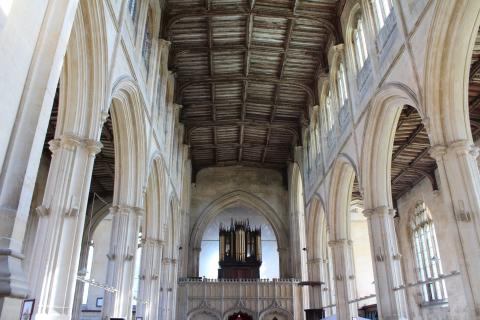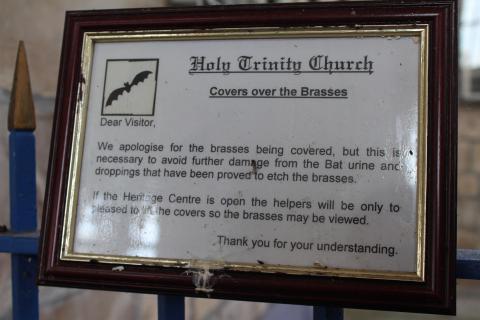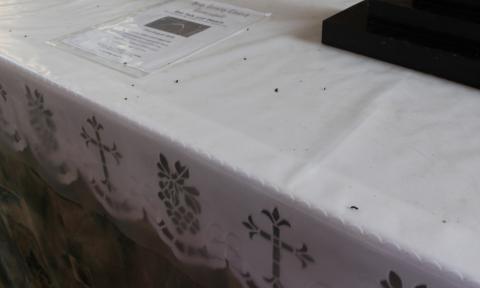Old Bats in our Churches

I recently visited a church that stank. As soon as I crossed the threshold, I walked through an almost-visible stench-barrier. I went to this church as a tourist, so anyone reading from those churches and chapels at which I preach may breathe a sigh of relief. Old buildings are often a little damp and get little aired, but this pong enjoyed a league of its own. Its source soon became clear- bats. The church is very tall and spacious, and these flying mammals like to roost on its beams and rafters. Their urine dribbles onto the ground below, bleaching stonework and woodwork pale; their little black faeces likewise drop down, piling up on the furniture and ledges. During services, their bickering may be heard and, as initially noted, they can be well detected by the nose. A hundred years ago, unsympathetic parishioners might have gone up ladders with a stout broom, but the bats are now protected by the Wildlife and Countryside Act (1981) and the Conservation of Habitats and Species Regulations (2017). This means one cannot deliberately take, injure or kill a wild bat, intentionally or recklessly disturb a bat in its roost or deliberately disturb a group of bats, damage or destroy a place used by bats for breeding or resting (roosts) (even if bats are not occupying the roost at the time). Basically, the bats have as much right to be in that church as the local population.

The church in question, Holy Trinity at Tattershall, Lincolnshire, has embraced their Microchiroptera congregants, providing information boards and informative evenings with bat experts. The medieval brasses they cover with screens, to prevent the bats’ urine, with its high level of uric acid, from corroding the metal. So apart from the smell and the ubiquitous black pellets, the bats are accommodated in more ways than one.

While contemplating the presence of these flittermice, to use their medieval name, I was drawn to the expression ‘old bats’. This is a somewhat derogatory term, exclusively applied to mature ladies. Some of the online definitions include:
If someone refers to an old person, especially an old woman, as an old bat, they think that person is silly, annoying, or unpleasant (Collins)
Any annoying post-menopausal woman, but especially one who applies a considerable amount of make-up and scares small children with her appearance (Urban Dictionary)
An unpleasant old woman (Longman)
An insulting word for an old woman who you think is slightly crazy (Macmillan)
According to Collins, the phrase was more popular in the 1750s than it is today, yet I think it found its real heyday between the 1920s and 2000. One of the reasons I think Christianity declined so dramatically in the British Isles was the dominance in its churches of the Old Bats. These were powerful, unyielding matriarchs, resistant to all change, lovers of tradition, basking in the social status that their petty position provided. Suspicious of newcomers, they hogged the jobs, defended their station and made terrible enemies to any who challenged their iron wills. Some knew the gospel, some didn’t, but the legacy was the same- younger generations turned off church, earnest pastors hampered, outreach curtailed. One recognisable example of this breed of harridan is the fictional Ena Sharples, wonderfully played by Violet Carson between 1960-1980 in Granada’s long-running Coronation Street. Stalwart and caretaker of the Glad Tidings Mission Hall, she was a morally and spiritually questionable character, which naturally made her a hit with the audience. Dot Cottam might be an equally suitable example from the BBC’s rival show, EastEnders. Of course, many men have fulfilled these church-killing functions as dexterously as any woman.
How many of our closed chapels bear the ammonic stains of these old bats’ pride, the pellets of hypocritical formalism and the stink of self-aggrandisement? We might have to tolerate the presence of real bats, but from the legacy of old bats we still need disinfecting.

No-one at Salem Chapel is described or alluded to in this blog post.
- Log in to post comments


 Sunday Worship 10.45am & 6.00pm
Sunday Worship 10.45am & 6.00pm